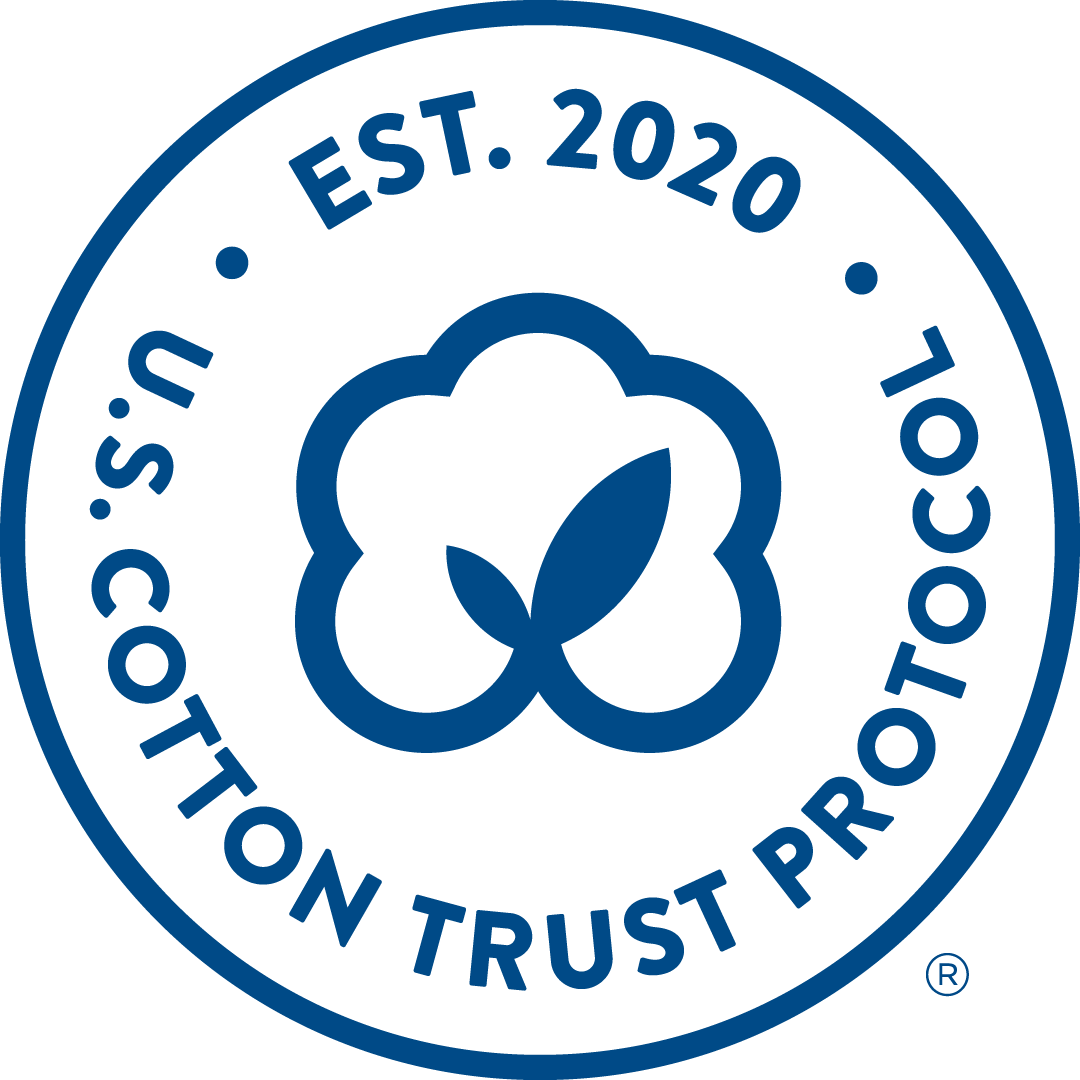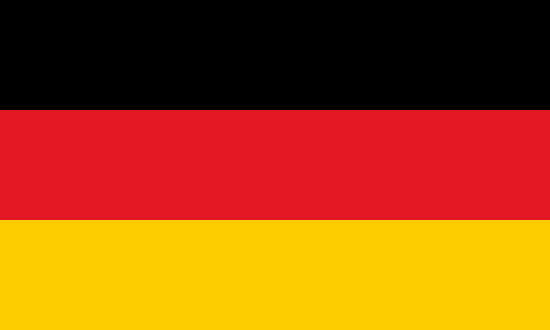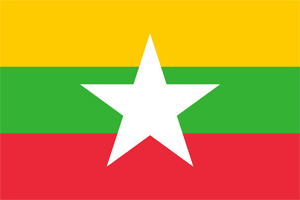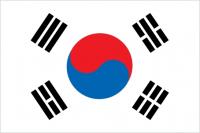U.S. Cotton Trust Protocol
U.S. Cotton Trust Protocol
(
Other relevant actor
)
#SDGAction53640
Description
The U.S. Cotton Trust Protocol is a voluntary, farm level science-based sustainability program that is setting a new standard for delivering value to all stakeholders across the entire supply chain from farms to finished products. It is the only system that provides quantifiable, verifiable goals and measurement and drives continuous improvement in six key sustainability metrics – land use, soil carbon, water management, soil loss, greenhouse gas emissions, and energy efficiency. It is also the world’s first sustainable cotton fiber program to offer article-level supply chain transparency to all members.
The U.S. Cotton Trust Protocol’s vision is to set a new standard in sustainable cotton production where full transparency across the supply chain is a reality and continuous improvement to improve our environmental footprint is the central goal. We were also specifically motivated by an appreciation of two key trends: firstly, an awareness of the hard work and commitment of many U.S. cotton growers to the highest environmental and labor standards. Secondly, by an understanding of the growing expectation of brands and retailers to not only provide goods that have highly transparent supply chains and a robust sustainability profile, but to also provide the evidence of this through robust third-party verification. The Trust Protocol has members made up of cotton growers, ginners, mills, manufacturers and brands and retailers. Grower members commit to providing field level data about the environmental metrics of the cotton that they grow, which is third-party verified. The program has also created the Protocol Consumption Management Solution (PCMS) to record consumption of U.S. Cotton and/or Protocol Cotton within all stages of manufacturing, creating a digital chain of custody that provides brands and retailers with unparalleled visibility into where their products are made.
The Trust Protocol was built on a foundation of science-based data capture, aggregation and reporting that drives continuous improvement across six key sustainability metrics. The grower self-assessment questionnaire serves as a cornerstone of the program, enabling measurement and verification, which are vital for sustainable cotton production. It also offers brands and retailers the necessary transparency, data, and assurances they seek. For Protocol growers, the questionnaire plays a crucial role, equipping them with tangible insights to enhance their sustainability and efficiency each growing season. As part of membership, growers input their production practices and resource usage annually and this data is aggregated with that of other producers in the program allowing for anonymous peer learning, both within a specific region and even nationwide. This also provides the opportunity for growers who participate each year to benchmark their progress and identify areas for improvement based on accumulated data. The Trust Protocol grower enrollment questionnaire consists of nine categories: Soil health, nutrient management, water management, crop protection, harvest preparation, biodiversity, fiber quality and traceability, farm management and worker well-being. The full document is publicly available on the Trust Protocol website (trustuscotton.org). Additionally, each year the program releases a publicly available Annual Report providing a full analysis of the science based, field level data for each of the six metrics reported by the program.
The Trust Protocol is overseen by a multi-stakeholder Board of Directors comprised of representatives from brands and retailers, civil society and independent sustainability experts as well as the cotton-growing industry, including growers, ginners, merchants, wholesalers and cooperatives, mills and cottonseed handlers that meets twice per year. The Trust Protocol also publishes an annual report outlining program performance and reporting aggregated farm-level data from grower members which is subject to third party verification via Control Union Certification and Averum.
The Trust Protocol contributes to the UN Sustainable Development Goals, is recognized by Textile Exchange and Forum for the Future, and part of the Sustainable Apparel Coalition, Cotton 2025 Sustainable Cotton Challenge, Cotton 2040, and Cotton Up initiatives. It has also been recognized and published in the ITC Standards Map, recognized as a standard for sustainable cotton by the Partnership for Sustainable Textiles, and confirmed as an ISEAL Community Member. Additionally, we have worked to ensure our program aligns with industry programs that help brand and retailer members utilize the tools provided by the Trust Protocol to further evidence their commitment to these specific initiatives. Findings from the 21-22 annual report also showed significant improvements compared to the 2015 Trust Protocol baseline with grower members demonstrating tangible results across all six key metrics: • 13% increase in land use efficiency • 14% increase in water use efficiency • 25% reduction in energy use • 21% reduction in greenhouse gas emissions • 78% reduction in soil loss • Positive Soil Conservation Index for 70% of growers
National Cotton Council, Cotton Council International
SDGS & Targets
Goal 6
Ensure availability and sustainable management of water and sanitation for all
6.1
By 2030, achieve universal and equitable access to safe and affordable drinking water for all
6.1.1
Proportion of population using safely managed drinking water services
6.2
By 2030, achieve access to adequate and equitable sanitation and hygiene for all and end open defecation, paying special attention to the needs of women and girls and those in vulnerable situations
6.2.1
Proportion of population using (a) safely managed sanitation services and (b) a hand-washing facility with soap and water
6.3
By 2030, improve water quality by reducing pollution, eliminating dumping and minimizing release of hazardous chemicals and materials, halving the proportion of untreated wastewater and substantially increasing recycling and safe reuse globally
6.3.1
Proportion of domestic and industrial wastewater flows safely treated
6.3.2
Proportion of bodies of water with good ambient water quality
6.4
6.4.1
Change in water-use efficiency over time
6.4.2
Level of water stress: freshwater withdrawal as a proportion of available freshwater resources
6.5
By 2030, implement integrated water resources management at all levels, including through transboundary cooperation as appropriate
6.5.1
Degree of integrated water resources management
6.5.2
Proportion of transboundary basin area with an operational arrangement for water cooperation
6.6
6.6.1
Change in the extent of water-related ecosystems over time
6.a
6.a.1
Amount of water- and sanitation-related official development assistance that is part of a government-coordinated spending plan
6.b
Support and strengthen the participation of local communities in improving water and sanitation management
6.b.1
Proportion of local administrative units with established and operational policies and procedures for participation of local communities in water and sanitation management
Goal 12
Ensure sustainable consumption and production patterns
12.1
Implement the 10-Year Framework of Programmes on Sustainable Consumption and Production Patterns, all countries taking action, with developed countries taking the lead, taking into account the development and capabilities of developing countries
12.1.1
Number of countries developing, adopting or implementing policy instruments aimed at supporting the shift to sustainable consumption and production
12.2
By 2030, achieve the sustainable management and efficient use of natural resources
12.2.1
Material footprint, material footprint per capita, and material footprint per GDP
12.2.2
Domestic material consumption, domestic material consumption per capita, and domestic material consumption per GDP
12.3
By 2030, halve per capita global food waste at the retail and consumer levels and reduce food losses along production and supply chains, including post-harvest losses
12.3.1
(a) Food loss index and (b) food waste index
12.4
By 2020, achieve the environmentally sound management of chemicals and all wastes throughout their life cycle, in accordance with agreed international frameworks, and significantly reduce their release to air, water and soil in order to minimize their adverse impacts on human health and the environment
12.4.1
12.4.2
(a) Hazardous waste generated per capita; and (b) proportion of hazardous waste treated, by type of treatment
12.5
By 2030, substantially reduce waste generation through prevention, reduction, recycling and reuse
12.5.1
National recycling rate, tons of material recycled
12.6
Encourage companies, especially large and transnational companies, to adopt sustainable practices and to integrate sustainability information into their reporting cycle
12.6.1
12.7
Promote public procurement practices that are sustainable, in accordance with national policies and priorities
12.7.1
Number of countries implementing sustainable public procurement policies and action plans
12.8
By 2030, ensure that people everywhere have the relevant information and awareness for sustainable development and lifestyles in harmony with nature
12.8.1
Extent to which (i) global citizenship education and (ii) education for sustainable development are mainstreamed in (a) national education policies; (b) curricula; (c) teacher education; and (d) student assessment
12.a
Support developing countries to strengthen their scientific and technological capacity to move towards more sustainable patterns of consumption and production
12.a.1
Installed renewable energy-generating capacity in developing and developed countries (in watts per capita)
12.b
Develop and implement tools to monitor sustainable development impacts for sustainable tourism that creates jobs and promotes local culture and products
12.b.1
Implementation of standard accounting tools to monitor the economic and environmental aspects of tourism sustainability
12.c
Rationalize inefficient fossil-fuel subsidies that encourage wasteful consumption by removing market distortions, in accordance with national circumstances, including by restructuring taxation and phasing out those harmful subsidies, where they exist, to reflect their environmental impacts, taking fully into account the specific needs and conditions of developing countries and minimizing the possible adverse impacts on their development in a manner that protects the poor and the affected communities
12.c.1
Amount of fossil-fuel subsidies (production and consumption) per unit of GDP
Goal 13
Take urgent action to combat climate change and its impacts
13.1
Strengthen resilience and adaptive capacity to climate-related hazards and natural disasters in all countries
13.1.1
Number of deaths, missing persons and directly affected persons attributed to disasters per 100,000 population
13.1.2
Number of countries that adopt and implement national disaster risk reduction strategies in line with the Sendai Framework for Disaster Risk Reduction 2015–2030
13.1.3
Proportion of local governments that adopt and implement local disaster risk reduction strategies in line with national disaster risk reduction strategies
13.2
Integrate climate change measures into national policies, strategies and planning
13.2.1
Number of countries with nationally determined contributions, long-term strategies, national adaptation plans and adaptation communications, as reported to the secretariat of the United Nations Framework Convention on Climate Change
13.2.2
Total greenhouse gas emissions per year
13.3
Improve education, awareness-raising and human and institutional capacity on climate change mitigation, adaptation, impact reduction and early warning
13.3.1
Extent to which (i) global citizenship education and (ii) education for sustainable development are mainstreamed in (a) national education policies; (b) curricula; (c) teacher education; and (d) student assessment
13.a
Implement the commitment undertaken by developed-country parties to the United Nations Framework Convention on Climate Change to a goal of mobilizing jointly $100 billion annually by 2020 from all sources to address the needs of developing countries in the context of meaningful mitigation actions and transparency on implementation and fully operationalize the Green Climate Fund through its capitalization as soon as possible
13.a.1
Amounts provided and mobilized in United States dollars per year in relation to the continued existing collective mobilization goal of the $100 billion commitment through to 2025
13.b
Promote mechanisms for raising capacity for effective climate change-related planning and management in least developed countries and small island developing States, including focusing on women, youth and local and marginalized communities
13.b.1
Number of least developed countries and small island developing States with nationally determined contributions, long-term strategies, national adaptation plans and adaptation communications, as reported to the secretariat of the United Nations Framework Convention on Climate Change
SDG 14 targets covered
Deliverables & Timeline
Resources mobilized
Partnership Progress

Feedback
Action Network

Timeline
Entity
Region
- Global
Geographical coverage
Other beneficiaries
U.S. cotton growers, brands and retailers, mills and manufacturers, consumers
More information
Countries






























Contact Information
Daren Abney, Executive Director

